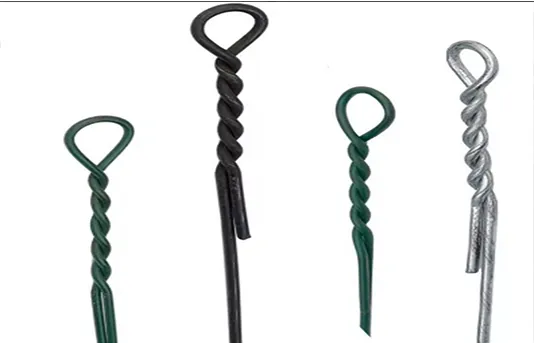-
 Phone:
Phone: -
 Email:
Email:

bale wire
Understanding Bale Wire A Key Component in Agriculture and Industry
Bale wire is an essential material widely used in various industries, primarily in agriculture for binding bales of hay, straw, and other forage crops. This simple yet significant product has a profound impact on the efficiency of farming operations and waste management. In this article, we will explore the uses, types, and advantages of bale wire, as well as its importance in both agricultural and industrial contexts.
What is Bale Wire?
Bale wire is a strong and durable metal wire designed specifically for bundling and securing various materials. Commonly made from galvanized steel or heavy-duty plastic, it is crafted to withstand the rigors of outdoor exposure and tension during the baling process. The wire is typically available in different thicknesses and strengths to cater to a range of applications, allowing farmers and industrial users to choose the right type based on their specific needs.
Applications in Agriculture
In the agricultural sector, bale wire plays a crucial role in the production and storage of hay and straw. Farmers use bale wire to secure bales tightly, ensuring that they maintain their shape and density. This is vital not only for transport but also for storage, as tightly bound bales are less likely to suffer from mold and spoilage. The use of bale wire reduces the risk of wastage, optimizing the yield from harvests and contributing to a more sustainable farming operation.
In addition to traditional bales, bale wire is also utilized in the packaging of other agricultural products. For example, it is often used to secure bags of feed, making handling and transport more efficient. Moreover, bale wire’s versatility extends beyond agriculture, as it can be used in various industrial settings for binding materials like cardboard, textiles, and plastics.
Types of Bale Wire
bale wire

Bale wire comes in several types, each tailored for specific applications. The most common types include
- Galvanized Steel Wire Known for its strength and resistance to rust, galvanized steel wire is ideal for outdoor use and is often employed in heavy-duty applications. - Plastic Bale Wire This type is lightweight and resistant to moisture, making it suitable for use in situations where metal may corrode. - Polyester Twine Although not a wire in the traditional sense, polyester twine is also widely used for binding bales due to its durability and UV resistance.
The choice of bale wire material often depends on the environmental conditions and the specific requirements of the task at hand.
Advantages of Using Bale Wire
The benefits of using bale wire are manifold. Firstly, it enhances efficiency in agricultural practices by ensuring that bales are compact, easier to handle, and less prone to damage. Secondly, it contributes to better storage conditions, prolonging the shelf life of foraged materials. Additionally, the cost-effectiveness of bale wire makes it an attractive option for farmers operating on tight budgets.
Conclusion
In conclusion, bale wire serves as a vital component in both agricultural and industrial sectors. Its role in securing and bundling materials significantly impacts operational efficiency, sustainability, and waste reduction. As agricultural practices continue to evolve with technology, the importance of reliable materials like bale wire will remain steadfast. For farmers and industries alike, understanding the various types and applications of bale wire can lead to smarter decisions that enhance productivity and profitability. Whether you are a seasoned farmer or a newcomer to the field, investing in quality bale wire is undoubtedly a step toward optimizing your operations.
-
Wire Mesh for Every Need: A Practical SolutionNewsJul.25,2025
-
Steel Fences: Durable, Secure, and Stylish OptionsNewsJul.25,2025
-
Roll Top Fencing: A Smart Solution for Safety and SecurityNewsJul.25,2025
-
Cattle Farm Fencing Solutions for Maximum SecurityNewsJul.25,2025
-
Affordable Iron Binding Wire SolutionsNewsJul.25,2025
-
Affordable Galvanized Wire SolutionsNewsJul.25,2025
-
Wire Hanger Recycling IdeasNewsJul.25,2025








